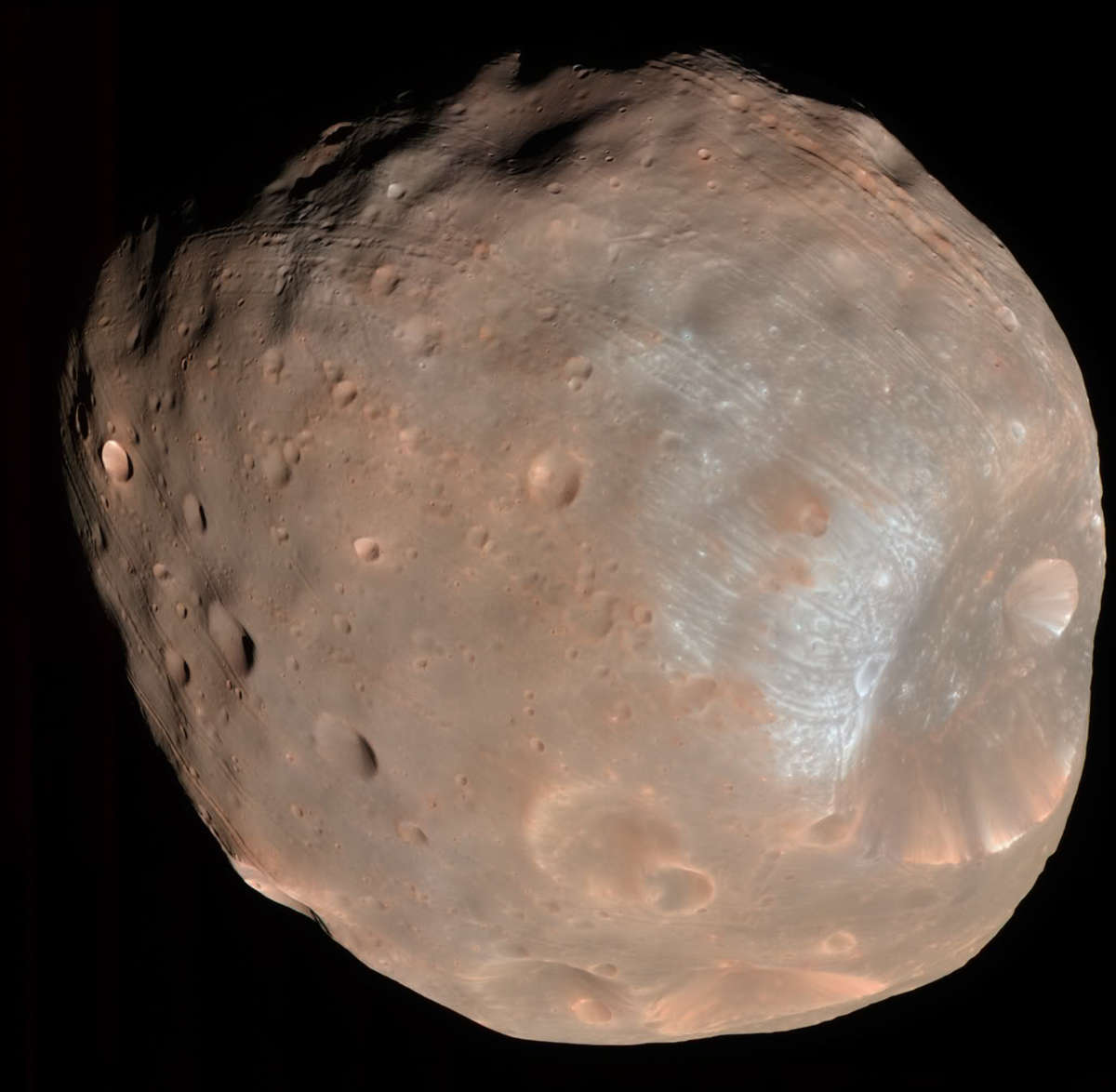Can We Terraform Mars? Turning the Red Planet Green

Is It Possible to Terraform Mars?
For as long as I can remember, I've been fascinated by the stars. The fact that we can now leave our planet and explore the Solar System is endlessly exciting. But what should be our next target for a manned mission? Many people say Mars.
Mars is one of our closest neighbours in the Solar System, and it has captivated us since long before we knew much about it. While we haven't detected any living Martians just yet, it's clear that Mars is similar to Earth in a lot of ways, and it's probably the most viable spot for colonization.
But can Mars ever be truly livable? Can Mars be terraformed? This article seeks to answer that question. We'll look at the current conditions on Mars, and what would need to change to make Mars a human paradise. Then we'll look at the steps necessary to carry that plan out. Let's get started!
Random Fact: Atmospheres in our Solar System:
Did you know that Earth has one of the thickest atmospheres in our Solar System? It's true (at least if we're looking at rocky planets).
The only large bodies with thicker atmospheres are Venus and Titan, the largest of Saturn's moons.
Titan is very interesting. It has an atmosphere so thick that walking through it would be like walking underwater. What's more, it has a hydrosphere of lakes, rivers and rain. But it doesn't rainwater, it rains liquid methane!
Current Mars Conditions & What Needs Terraforming
If you're trying to figure out how to terraform mars, the best place to start is to look at where Mars currently stands, and the conditions on the surface. While there are some similarities between Mars and Earth, there are also some big gaps. Let's dive in.
Air Pressure & Atmosphere:
Unlike the Moon, Mars does have small atmosphere, though it is nowhere near as thick or robust as Earth. At its thickest, the atmosphere is around 1% of the atmosphere of Earth. Want to find out what that's like? Take a space ship up to roughly 30 kilometres above the Earth's surface, and the atmosphere will be around the same.
That's a big problem for us Earthlings. That's well below the threshold of human tolerance, and the atmosphere would kill us in short order without a pressurized suit on.
But what's Mars' atmosphere made up of? It is mostly carbon dioxide, with a small amount argon and nitrogen. Earth's atmosphere is largely nitrogen and oxygen, so as it stands the air is completely unbreathable on Mars.
Surface Temperature:
Another hindrance to human habitation is the low temperature. Mars averages around -55 °C (-67°F), but it can get as warm as 35 °C at the equator, and as low as -153 °C at the poles. That's a pretty big spread!
The encouraging news is that Mars has survivable temperatures already, at least at the equator. The bad news is the temperature fluctuates wildly.
That's mainly because there's very little atmosphere to regulate temperature, and no ocean. You see, here on Earth our atmosphere acts much like a blanket, keeping warmth in, and the oceans function a lot like a giant radiator, absorbing heat and retaining it.
On Mars, there's very little to keep heat on the surface, and it dissipates rapidly. That's a big problem for humans. We can survive a fairly wide temperature range, but Antarctic weather conditions aren't very comfortable!
Water / Natural Resources:
A big part of sustainable space exploration involves something called 'in situ resource utilization', or ISRU. ISRU means that, rather than having to carry all your water, air and fuel with you, you can mine and produce those resources on site.
Mars has a lot of very valuable natural resources. The primary one is water ice, which can be broken down to create fuel, oxygen to breathe, and of course water for consumption.
How much water is on Mars? In fact, there is enough water on Mars to cover the planet entirely (if it were all to melt at once). Beyond the ice caps, there is subsurface water just about everywhere.
It's actually theorized that Mars was once a very wet planet, similar to a primordial Earth. It even had ancient lakes1.
We aren't sure about the mineral resources of Mars just yet, but with all the volcanic activity it has had, it's very likely that Mars is rich in iron, copper and nickel.
Magnetosphere:
One thing that Mars lacks is a magnetosphere. Earth has one, and it is largely responsible for keeping harmful cosmic rays and radiation away from the surface.
Mars lack of a magnetosphere means that the surface is bombarded with radiation, which can kill life as we know it. It also means that Mars atmosphere is being slowly stripped away into space. The atmosphere was probably once much thicker.

How To Terraform Mars:
In order to begin terraforming Mars, we'll need to counter the conditions that make it unliveable. This can be achieved with a combination of technology, bioengineering and simply letting nature do the work, but it's still a daunting task.
Here is my super basic rundown on what we'll need to do to get Mars up and running as a human outpost.
Up The Pressure:
If we're ever going to live there, we need to increase the atmospheric pressure of Mars. That's no mean feat, considering that most of the gases we need to breathe don't currently exist there.
However, there are a few strategies that might work. First, we'll need to colonize the surface with pressurized habitats. Once there, we start building smog factories. No really!
We need to start producing carbon dioxide and releasing it into the atmosphere if we want to terraform Mars. This will have two effects: it will increase the surface pressure, and it will act as a greenhouse gas, increasing the temperature.
It's possible that these smog factories can be dual purpose, where the carbon dioxide is a by-product of some other industry.
While we're at it, we should also try to generate some chlorofluorocarbons, or CFCs. It is a powerful greenhouse gas. Eventually, a runaway greenhouse effect would take place, and the planet would start to warm up.
Create Buffer Gas (Somehow):
Another important step to terraforming Mars is to create a buffer gas, preferably an inert element that we can breathe safely, like nitrogen or argon. Oxygen on its own is way too flammable, and we only need the 20% concentration or so that we get here on Earth.
This is probably one of the trickiest bits. Although nitrogen is a common element in the Universe, it is not super abundant on the inner planets of our Solar System. We'd have to find one that we could (hopefully) extract from the surface of Mars. If not, we'd have to import it, which would be a monumental task.
Gradual Introduction of Plants:
Plants are an essential part of my plan to terraform Mars. After there is a good concentration of carbon dioxide, and the atmospheric pressure is increased, we can start to introduce some hardy plants. Lichens have been shown to survive current Mars conditions (simulated here on Earth).
Plants take carbon dioxide (which contains oxygen) and produce oxygen as a by-product. Thus, the introduction of plants would gradually make the air more breathable.
As the planet continues to warm, and the atmosphere thickens, liquid water will be possible. Lakes, rivers, streams and oceans should begin to appear, and water based weather will increase.
Temperature Supplements:
Personally, I'm not sure that increasing the atmospheric pressure will be enough to coax Mars into becoming a paradise. I think we'll need to do a bit of geo engineering to increase the surface temperature to livable standards.
I think it's probably only possible to terraform Mars if we take advantage of space-based technology.
Giant space mirrors, or mirror clouds in the atmosphere might be ways to redirect more solar energy down onto the surface. That might be a vital thing, since Mars only gets around 40% of the sunlight that Earth does.
Why Should We Bother Terraforming Mars?
No matter how we go about doing it, terraforming Mars is a colossal task that will likely take many lifetimes to achieve. Why bother doing it?
I have a few reasons. First, our population is increasing. It's likely to level out at some point, but the pressure on our planet will be immense. If we can make Mars livable, it presents a viable alternative. Immigrants can travel to Mars much like the pilgrims made their way to America.
Secondly, it's hedging our bets as a species. If a world ending disaster were to strike Earth today, we would have no recourse. Our species would end. If we live on two worlds, however, it ensures that many of Earth's wonderful species can live on.
A third reason might surprise you: Mars might be more healthy for humans than Earth is! Martian gravity is about one third of Earth's. If you weigh 180 pounds on Earth, you will weigh around 60 pounds on Mars.
It's possible that many debilitating physiological illnesses faces on Earth would be alleviated by Martian gravity. See you later, sore back! This is difficult to verify until we actually live there, and it's just my personal theory.
What are some other reasons we might want to terraform Mars? Feel free to chime in in the comments section below. Thanks for reading!
Space Exploration Poll:
Where should humanity focus its space exploration efforts?
References:
1) Ancient Martian Lake May Have Supported Life, by Kenneth Chang, New York Times, December 9, 2013


